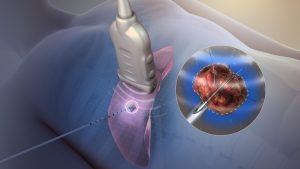In the realm of pain management and physical therapy, Trigger Point Dry Needling (TPDN) has emerged as a valuable technique to alleviate musculoskeletal pain and improve functional mobility. This minimally invasive procedure involves the insertion of thin needles into specific trigger points within muscles, aiming to release tension and promote healing. In this article, we will delve into the intricacies of Trigger Point Dry Needling, exploring its benefits, process, and the science behind its effectiveness.
Trigger Point Dry Needling (TDN) is a technique used to treat multiple muscle related injuries. The most common condition it is treated for is pain from muscle tension or muscle spasms. It is specifically called “dry needling” because there is no solution injected from the needle. The physical therapist will use a solid filament needle to insert into the skin and into the muscle. It is aimed at specific myofascial trigger points to relieve the tension from the muscle.
Understanding Trigger Point
Defining Trigger Points:
Trigger points are hyperirritable knots or taut bands within muscles that can contribute to localized or referred pain. These points often develop due to muscle overuse, trauma, or poor posture. TPDN targets these trigger points to relieve pain and restore muscle function.
How Trigger Points Develop:
Trigger points can develop for various reasons, including muscle imbalances, sustained muscle contractions, or direct trauma. Over time, these points can lead to pain, restricted movement, and even muscle weakness. TPDN aims to interrupt the pain cycle associated with trigger points.
The Science Behind Trigger Point Dry Needling
Neuromuscular Impact:
TPDN works by directly impacting the neuromuscular system. When a thin needle is inserted into a trigger point, it stimulates a local twitch response, causing the muscle fibers to contract and then relax. This process helps break the pain cycle and encourages blood flow to the affected area, promoting healing.
Release of Chemicals:
The insertion of needles prompts the release of various chemicals in the body, including endorphins and enkephalins. These natural painkillers help alleviate discomfort and create a sense of well-being. Additionally, the needling process can enhance the circulation of anti-inflammatory agents, aiding in the reduction of inflammation.
The Process of Trigger Point Dry Needling
Assessment and Diagnosis:
Before administering TPDN, a thorough assessment of the patient’s medical history, physical condition, and specific pain complaints is conducted. The therapist identifies trigger points and determines the optimal treatment plan.
Needle Insertion:
During the TPDN session, thin, sterile needles are carefully inserted into the identified trigger points. Patients may experience a brief sensation of discomfort or muscle twitching during this process. The depth and duration of needle insertion vary based on the individual’s condition.
Post-Needling Care:
Following the TPDN session, patients are often advised to engage in gentle stretching exercises and maintain proper hydration. It’s common to experience mild soreness for a short period after the procedure, but this discomfort typically subsides quickly.
Benefits of Trigger Point Dry Needling
Pain Relief:
TPDN is renowned for its ability to provide rapid pain relief. By targeting trigger points and promoting muscle relaxation, this technique can alleviate acute and chronic pain associated with various conditions, including muscle strains, tension headaches, and myofascial pain syndromes.
Improved Range of Motion:
Patients undergoing TPDN often report improved flexibility and range of motion. By releasing tension in muscles and promoting better muscle function, individuals can regain mobility and participate in activities with greater ease.
Complementary Treatment:
TPDN can be used in conjunction with other physical therapy modalities and treatments. Its versatility makes it a valuable tool for addressing a wide range of musculoskeletal issues.
Conclusion:
Trigger Point Dry Needling stands at the forefront of innovative and effective pain management techniques. By directly addressing trigger points within muscles, TPDN offers patients a path to rapid pain relief, improved mobility, and enhanced overall well-being. As with any medical procedure, it is crucial for individuals to consult with qualified healthcare professionals to determine if Trigger Point Dry Needling is a suitable option for their specific condition.




